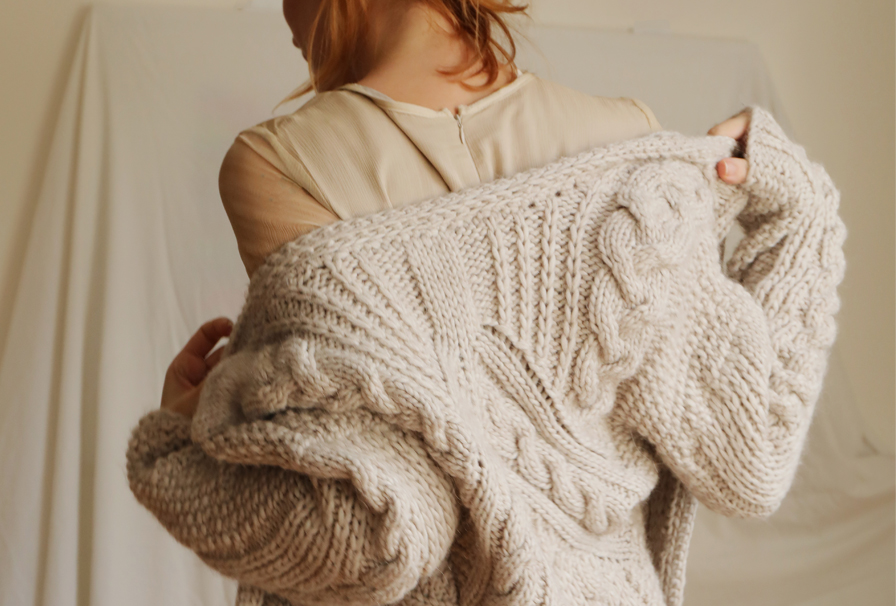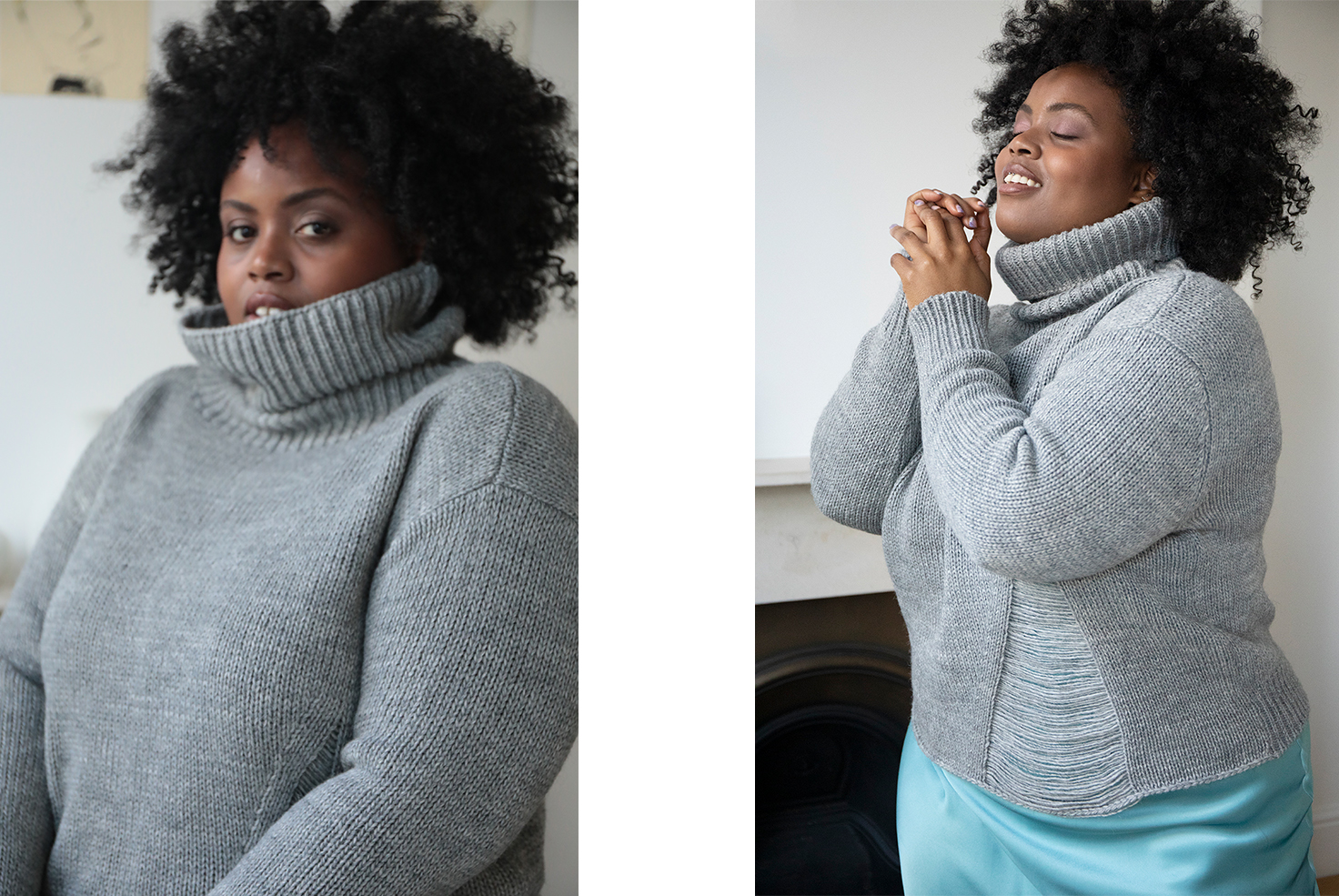How to Care for Your Knitwear

The unfortunate truth is that the cold, dark days are drawing near and whether you’re out picking pumpkins and taking your annual #pumpkinpatch selfies, or snuggling down with popcorn and your favourite book, you’re probably doing it in your favourite knitted loungewear.
The thing is, so many people love their winter knits and the ceremonial act of digging out their winter warmers but it can be tricky to get the care right for our most loved items; ensuring they last as long as a bear in hibernation! More importantly, if you are going to shop for something with sustainable properties in mind, understanding the composition and science behind why natural fibres should be what you invest in is so important. So, we’ve put together the best guide out there in our ‘101 on how to care for your knitwear’.
So, what do product descriptions mean when they list the ‘composition of fibres’?
When we say textile fibres or ‘fabric composition’, what we’re talking about is the percentage of each fibre that makes up the textile. And, actually, there are only two types of fibre groups that we use to make textiles - natural fibres or manmade fibres. When talking about natural fibres we can include cotton, wool, linen, silk, hemp, cashmere and mohair. Natural fibres can only be plant-based or animal-based. Contrastingly, when we’re talking about ‘man-made’ or synthetic fibres we can include; polyester, acrylic, nylon, viscose and acetate.

And, why are manmade materials so bad?
Something that is made of manmade fibres either entirely or partially, can and will remain on the earth, contributing to the dizzyingly high amounts of waste in landfills across the globe which are incredibly damaging to our environment.
As an example, polyester and nylon are by-products of petroleum and are hazardous due to the greenhouse emissions they omit during manufacture. Long term effects of synthetic fibres can also damage our health due to tainting waterbodies as the waste products from textile factories that use synthetic products end up in our waterways and sewers.
Does that mean natural fibres the sustainable ones?
Well, here’s the thing. There is no such thing as ‘the most sustainable fabric on the planet’. But, what we do know is that natural fibres are biodegradable. Meaning that, when an item that is entirely made of natural fibres - let’s say a shirt made from 100% raw silk reaches a landfill, it will eventually break down on its own and disappear from the earth. This is what we should all be working towards!
Okay, so how do I care for the knitwear I have and love?
Easy, we’ve got you covered:
Always wash it by hand or on your wool programme. It’s really important to wash your knits properly and that’s perhaps where most people get it really wrong. Depending on the composition of the knit it can be anything from cotton to wool, alpaca, cashmere or mohair. It can also be acrylic but we won't really discuss that because we don't use manufactured fibres in our knitwear at Lora GENE. What is important to note, however, is that inevitably, there may be traces of acrylic or nylon fibres within the mix of natural fibres.
- The best way to care for your knitwear items is to wash them with lukewarm water by hand, with a special detergent for wool. Cotton can potentially be washed in the washing machine at 30℃, but we would always advise using a milder detergent.
- Never hang your jumpers - the fibres in the knits are much looser than the ones woven on a textile. Hence they are easily stretchable and will lose shape if you hang them.
- Use a lavender bag to keep the moths away. Perhaps you can also add a few drops of lavender essential oil to a small pouch of your choice and leave it between your jumpers, but you risk them taking up the smell so we advise the use of dry lavender in a bag.
- Get yourself an anti-pilling machine - most natural fibre will inevitably make some pilling, and if you use that phenomenal invention after you wash your sweater, it won't have those nasty little bubbles on the sleeves or elsewhere. (This could also be done with a shaving blade but it’s much harder and riskier!) The anti-pilling machine is about 20 pounds and it will save you hundreds of pounds in the long term.

Love your knits and treasure them :) Why not tag us using #lorageneloves in your treasured Lora GENE knits!
